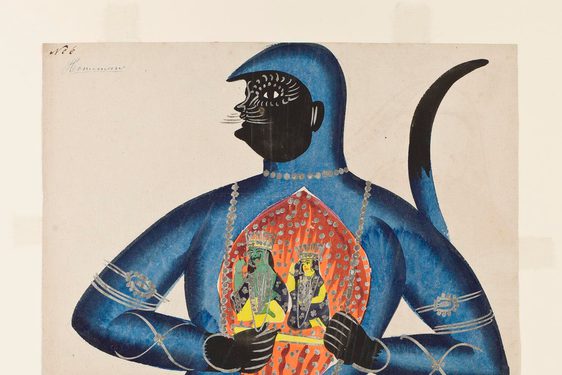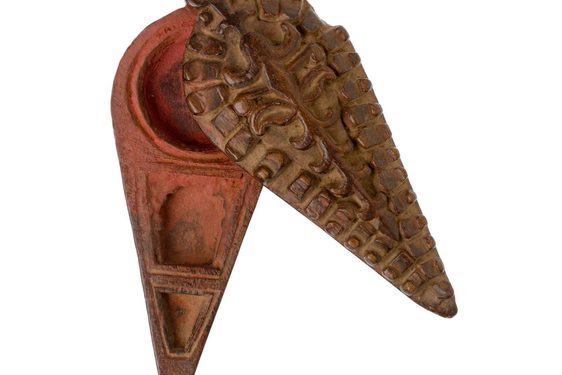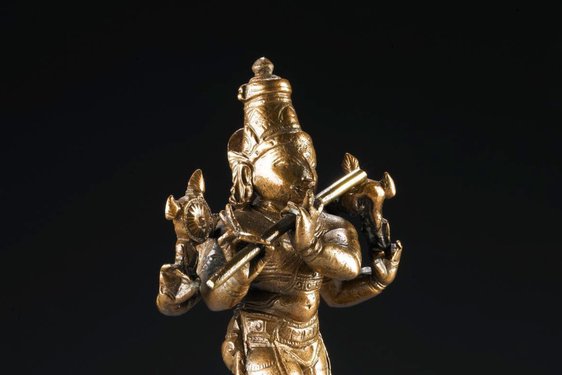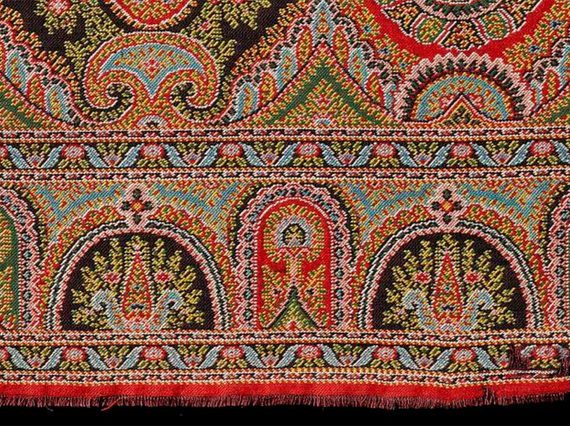
Stories about the South Asian origins of Paisley pattern
News Story
Paisley design: our humble buta
The Paisley design - one of the most famous textile patterns of Scotland - is for us the humble buta, ambi, or kalga, the most celebrated motif known to Indian weavers.
We grew up with the design adorning our garments, shawls, bridal wear, jewellery, and henna tattoos. This design is now world famous as ‘Paisley’, a town in Scotland, but the design has its origins in India, emanating from the valley of Kashmir, depicting the Kashmiri craftmanship and the tales of that valley. Many believed that this buta design was inspired by a Zoroastrian design representing life and fertility.
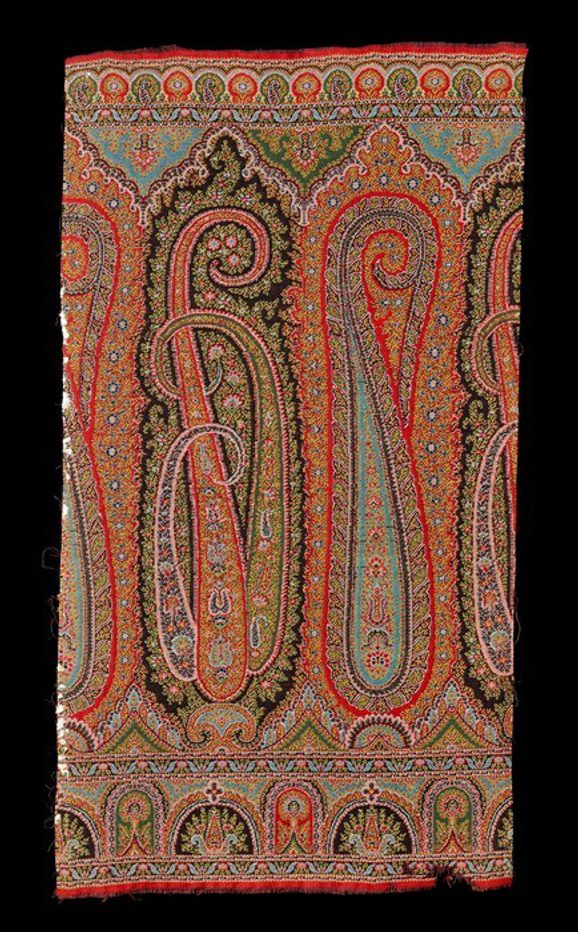
Sample of a Paisley shawl pattern with long cone or buta shapes at the centre, probably Scottish, Paisley, mid-19th century. Museum reference H.TRA 6.8.
The Paisley motif is associated with luxurious Kashmiri shawls woven from fine goat hair and its incredibly soft design exudes sophistication and expense. How did this motif make its way to Scotland in the 16th century? Well, some stories suggest that Kashmir fabrics were used by Persian royals and offered as a gift to British officers. It wasn’t long before it landed in the wardrobes of fashion icons and royalty in Britain. Kashmir shawls became the height of British and European fashion, but they weren’t affordable, so British manufacturers sought ways to replicate the design to sell in local markets.
Another story goes that William Moorcroft, an English businessman, brought expertise from Kashmir to Scotland to support the manufacture of cheaper imitation shawls in Britain, including at factories in Paisley. That provided jobs to hundreds of Scottish people, taking away the means of livelihood from people back home in Kashmir. The buta design gained popularity all over the world. Several international brands including Gucci, Burberry, Dolce and Gabbana and Yves Saint Laurent have embraced this versatile pattern in many of their collections.
Image gallery
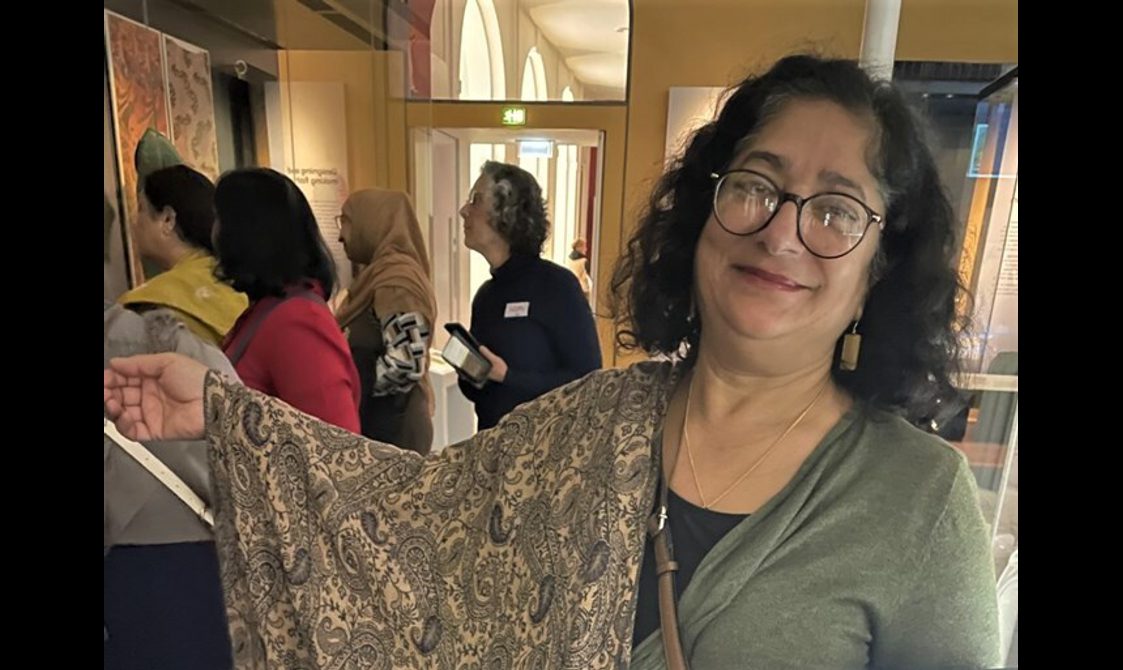
Participants brought their own much loved Paisley shawls, demonstrating how popular the pattern still is.
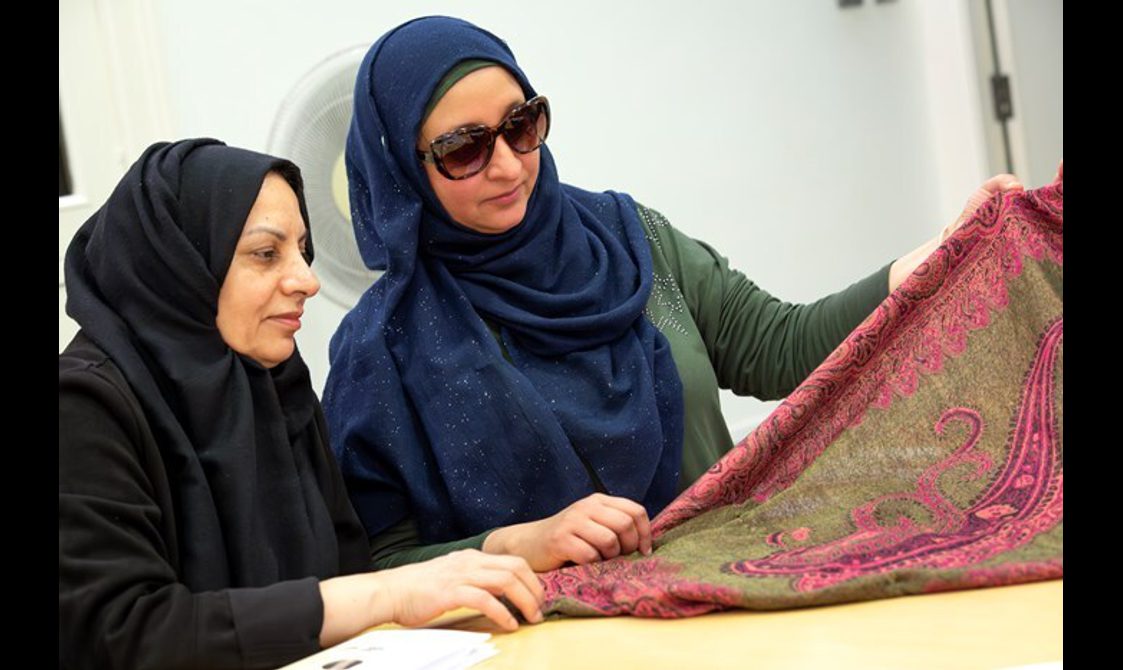
Group discussion and investigation of the Paisley shawl.
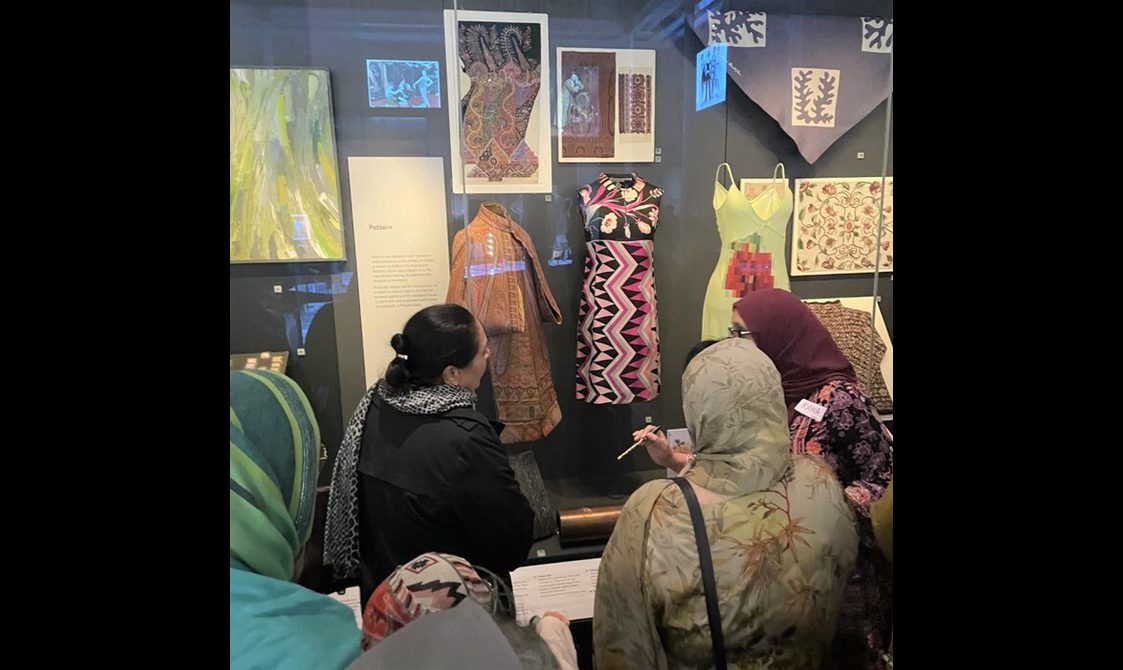
Group visit to view Paisley shawls and patterns in the Fashion and Style gallery.
The history of the Paisley pattern perplexed one of the participants. Being born and brought up in Paisley, she didn’t know its history or to say it more precisely, the other side of the story. It’s a shame that these stories are lost, and we are not able to recognise the real artisans from India who by far were more capable of producing fine quality work. We know from history that whatever came to Britain got mechanised, and the real handwork of Kashmiri craftsmen, the intricacy of the design the originality of using goats hair to weave those fine quality fabrics, was ignored and untold.
Examples of Paisley patterns can be seen in the Art, Design, and Fashion galleries at the National Museum of Scotland.
Written by
Members of the Networking Key Services group
In 2022 South Asian community groups supported by Networking Key Services (NKS) visited the National Museum of Scotland to view the galleries and interpret objects from the South Asian and Scottish collections.
